This exclusive blend of Sencha Wild Gray comes from the base of Sencha which is enriched as the most classic of English teas with bergamot. The green tea is flavoured with high-quality natural bergamot, orange blossom and flavored with lemon peel - for a sophisticated and beneficial citrus note. Sencha Wild Gray is a delicious and refreshing tea, an alternative to the classic Earl Gray with black tea, and perfect for Sencha lovers.
Sencha Wild Gray Green Tea: properties and benefits
The pleasant scent and flavor of this Earl Gray with green tea is accompanied by several well-being benefits. This green tea has antioxidant properties, able to help the body prevent oxidative stress, protect the body's cells from damage and aging.
As a source of antioxidants, this tea contains D-limonene, a flavonoid found in lemon peels, useful for decreasing oxidative stress, tissue damage and accelerated ageing. The vitamin C content can strengthen the immune system, while the elements deriving from the lemon peels help improve digestion by reducing irritation of the digestive system. Furthermore, this green tea can be useful for improving the well-being of the oral cavity and bones (via vitamin C and calcium).
Among the health benefits of green tea, there is that it promotes digestion. Flavonoids fight irritation of the digestive system, along with compounds that may aid in soothing digestive disorders. The secretion of gastric juices is favored by theine (caffeine), while the catechins (antioxidant present in tea) do not damage the good intestinal bacteria. For those who want to use this tea for gastrointestinal well-being, it is always useful to take the tea accompanying it with food, since the tannins present in green tea can increase gastric acidity away from meals.
Several researches are focusing on tea polyphenols, for their usefulness in weight loss. The mechanisms of this effect concern a potential effect on the digestion of lipids (fats), and the stimulation of fat metabolism. In any case, this tea has a diuretic effect which helps in slimming diets, by expelling toxins and excess liquids which cause water retention. Furthermore, the aroma of bergamot and citrus fruits is used in aromatherapy to relax in order to reduce psychological stress and nervousness.
Origins and History of cultivation
Earl Grey is the most popular flavored tea in England, a classic that has been created for centuries with black tea and the aroma of bergamot . This variant with Sencha green tea makes it even tastier and more beneficial, but its story begins differently. According to a legend it was introduced by Count Charles Gray (1764-1845), also known as Viscount Howick, and Prime Minister of the United Kingdom from 1830 to 1834. It all started from the fact that during a mission in China the count saved the life of the son of a Chinese, and as a reward his father gave him the recipe for bergamot tea.
The earl loved this tea so much that he asked his dealer to recreate it after him, and thus Earl Gray tea was born. Beyond the legend, other hypotheses evaluate the fact that the Bergamot fruit comes from the Mediterranean. The flavored tea probably derives from a gift to the count after the end of the commercial monopoly of the British East India Company, thanks to the Reform Act of 1832. The East India Company was actually the first to introduce flavored black tea to the West with bitter orange blossom or citrus fruits, since 1793.
According to some historians, citrus fruits or bergamot were added to prevent mold from forming on the tea on its journey to England. Botanists and Company managers George Staunton and Joseph Banks then recreated the recipe called Staunton Earl Gray after experimenting with different citrus flavors. They presented it to Count Charles Gray who was enthusiastic about it, and according to a testimony he also recommended it to the Royal Household. In the recipe of Sencha Wild Gray green tea with Bergamot, tradition changes by replacing the most common and widespread tea in Japan.
The Sencha is a type of green tea that resembles the thin and fine needles of a pine tree in shape. It is usually grown in full sun, but can be made with shaded tea leaves. The differenceentiation of this green tea begins with the collection of the bud and the first two leaves, to produce Sencha. Immediately after harvesting, the leaves are subjected to a steaming process which stops the oxidation of the leaves, as in other green teas. After cooling, the leaves are rolled up, which will be flavored with orange blossom and natural bergamot aromas, usually at the end of the processing. Once the tea leaves are dried and dried, they are mixed with herbs, flowers and spices. When it comes to flavourings, essential oils, extracts and flavor elements are sprayed during or after drying. Bergamot is a citrus fruit known with a name that has been discussed to understand its origin. According to some it derives from the Turkish bey armudu, meaning “pear of the lord”. According to others from the city of Bergamo, Berga (Barcelona), Pergamon (ancient Troy), and even from the Canary Islands or China.
Its color probably indicates a genetic mutation from other citrus species of oriental origin (lemon, bitter orange, lime). We know that the first documented planting of bergamot trees took place in 1750 in Calabria. Even today the bergamot orange is mostly grown in Italy, known for its use in Earl Gray tea. The bergamot peel has a characteristic floral fragrance, commonly used as an aroma or in perfumery.
Plant and flowers
The scientific name of the tea plant is Camellia sinensis, belonging to the family: Theaceae. It usually consists of a small shrub, often pruned to facilitate the collection of tea leaves. In nature it can also reach a height of 6-9 meters. The plant is widely distributed in tropical and subtropical areas of the world. It prefers acidic soils, but can also tolerate neutral ones, and develops best in full morning sun and afternoon shade. It is grown in the shade or in the sun, depending on the quality of tea to be obtained. It needs watering in summer, and needs to be protected from strong winds – it grows up to 2,200 meters above sea level. The flowering shows small single white flowers, while the leaves are used for the preparation of green, black and oolong tea.
The shoots of C. sinensis, composed of 2 or 3 leaves, are harvested every 7-15 days during the growing season. The seeds and leaves are used in cosmetics. There is also the Camellia sinensis assamica variety, very similar to Camellia sinensis, but the leaves are larger, thinner and harder in texture. Bergamot is the fruit of the citrus fruit Citrus × bergamia, whose tree produces a yellow-green pear-shaped fruit, whose peel is widely used to flavor food, drinks and tea. Bitter orange flowers come from the bitter orange plant Citrus Aurantium, or sometimes from Citrus sinensis - sweet orange.
Nutritional values of Sencha Wild Gray green tea
The benefits deriving from Sencha are largely due to the antioxidants present in the leaves. Green tea contains excellent doses of the antioxidant EGCG (epigallocatechin gallate) and polyphenol catechins (epigallocatechin-3-gallate EGCG, epigallocatechin EGC, epicatechin EC). Furthermore, it makes nutrients such as saponins, mineral salts such as potassium, calcium and phosphorus available. It also contains caffeine and other methylxanthines such as theobromine and theophylline, some amino acids (theanine and arginine), vitamins (vitamin A, C, group B including folic acid or B9). Lemon peels increase the vitamin C content and have a high amount of magnesium, potassium and calcium.
How to prepare Sencha Wild Gray green tea with Bergamot
The infusion is obtained by placing about 3-5 grams of this bergamot-flavored green tea in a cup (250 ml). Water at a temperature of 80 °C. Leave to infuse for 2 to 3 minutes, before drinking the Sencha tea infusion.
Sencha green tea: side effects and contraindications
Green tea is commonly consumed as a beverage, and its use is safe for most people in non-excessive quantities. Consuming large quantities can cause side effects due to the caffeine content. They can range from mild to serious, and include headache, irregular heartbeat, difficulty sleeping, agitation. In addition, excessive doses can affect the digestive system through intestinal irritation and diarrhea.
It should be taken with caution by those suffering from anemia, bleeding disorders, high blood pressure and pathological heart conditions.
Caution is advisedthe intake of green tea in pregnancy and breastfeeding.






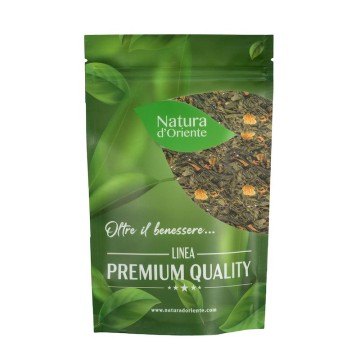


 No reward points for this product.
No reward points for this product.
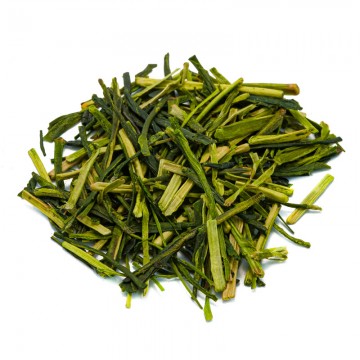
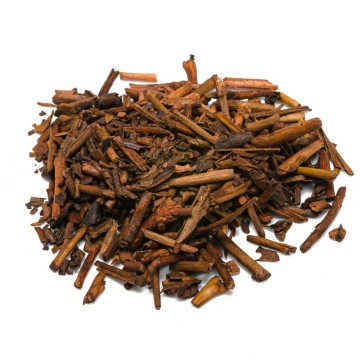
![Green tea with orange and grapefruit [Natura d'Oriente]](https://www.naturadoriente.com/3376-home_default/green-tea-with-orange-and-grapefruit.jpg)

![Green Tea Choui Fong Tea [Natura d'Oriente]](https://www.naturadoriente.com/3379-home_default/green-tea-choui-fong-tea.jpg)

![Green tea Jasmine and jasmine [Natura d'Oriente]](https://www.naturadoriente.com/3373-home_default/green-tea-jasmine-and-jasmine-.jpg)
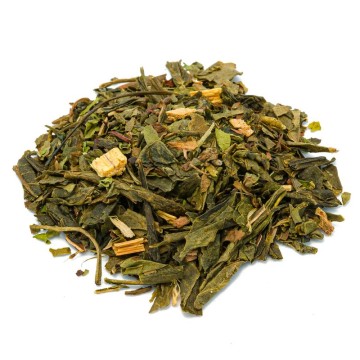
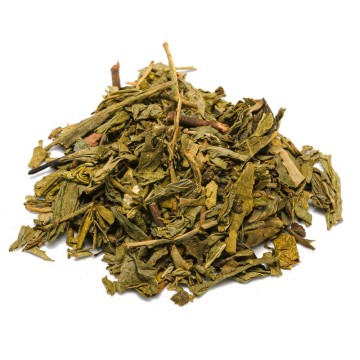


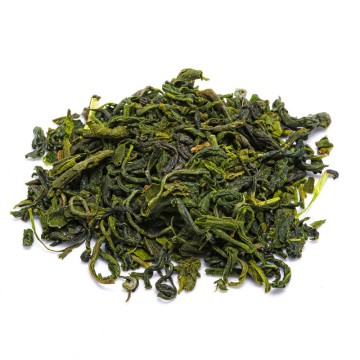

![Green Tea Ceylon Melfort Special [Natura d'Oriente]](https://www.naturadoriente.com/3378-home_default/-green-tea-ceylon-melfort-special-.jpg)

